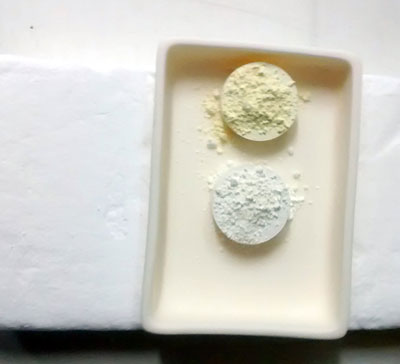| Posted: Mar 01, 2016 |
Novel nanostructured ceramics convert wasted heat into electricity
(Nanowerk News) Talia Alvarez, currently studying her doctorate at the University Of Manchester, UK, designed nanostructured ceramics, which are thermoelectric materials that convert the heat produced un industrial processes into electrical energy.
|
|
In order to find an alternative energy source, the researcher shapes and designs these materials for use in different industries, such as space or automobile, in the latter to reuse the heat released in the exhaust pipe of a car.
|
 |
| Nanostructured ceramics.
|
|
The air temperature exiting said device is at approximately 800 degrees kelvin, and causes the exhaust pipe of an automobile to reach between 700 and 600 degrees Celsius. A temperature difference that can be used to generate electricity, said Alvarez Ruiz, master of science in electrical engineering from the Center of Research and Advances Studies (CINVESTAV) in Mexico.
|
|
The aim is to create a ceramic with excellent chemical conditions, which is economical and coats the tube leakage or engine of a vehicle. This assures the recovery of heat and savings on fuel.
|
|
More than two thirds of the energy released in burning fossil fuel is wasted as heat and released to the environment. Besides the machines, vehicles, even the human body produces this energy source that goes to waste, said Alvarez Ruiz.
|
|
In search for cheap ceramics
|
|
The native of Tapachula, Chiapas, in the south of Mexico, shapes and designs nanostructured ceramics which main component is zinc oxide, a semiconductor used in industry, abundant in nature, economical and environmentally friendly.
|
|
"What I do is play with the chemical composition of the material and the manufacturing process to improve the properties, because the current ceramics with high efficiency are expensive and toxic".
|
|
Alvarez Ruiz seeks a ceramic that does not have these toxic characteristics. The problem is that the temperature difference needs to be very large and so far in the laboratory only a small voltage is obtained.
|
|
"Commercial materials have an efficiency of 4, mine has an efficiency of 0.6. The difference is large but the advantages are many, we aim to reduce production costs that in the future will be beneficial to society."
|
|
Ceramics designed at the University of Manchester could be implemented to take advantage of the heat released in thermoelectric plants and generate enough electricity to power light bulbs.
|

